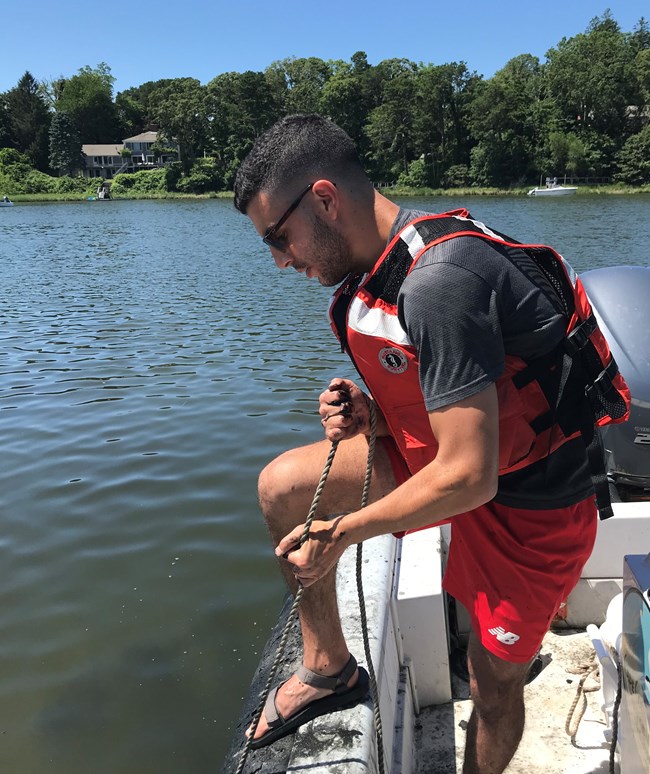Last updated: December 17, 2019
Article
GIP internship program broadens one student's career horizon

Plaisted, NPS
Eddie Cascella’s childhood love of the outdoors and nature compelled him to pursue an education at American University in Washington DC, as an Environmental Science major. It was during his sophomore year at the University that he learned of the Geoscientists-in-the-Parks (GIP) Program. Having extensive experience in writing through both course work and media outlet press releases at school, one GIP internship opportunity especially caught his eye: Science Communication Assistant with the National Park Service (NPS).
Since 1997, the National Park Service and the Geological Society of America (GSA) have partnered together to deliver experiential learning opportunities through the Geoscientists-in-the-Parks(GIP) Program. Through this program, NPS and GSA provide aspiring natural resource scientists and geoscientists with paid short-term internships where the interns contribute to all forms of natural resource monitoring, research, and science communication. Starting in 2016, the NPS has partnered with Stewards Individual Placement Program (Stewards) to administer the GIP Program.
After finishing up his sophomore year in May of 2019, Cascella began reporting to his internship at the University of Rhode Island where the Northeast Coastal Barrier Network (NCBN)---a network in the NPS Inventory & Monitoring Program---is stationed. As part of his internship Cascella was tasked with s writing short resource briefs or “species spotlights” that provide information about important species in NCBN parks. Using other communication platforms, he also created an ArcGIS Story Map about monitoring bat populations in the coastal parks, in the wake of the white nose syndrome outbreak.

NPS
On occasion, Cascella assisted his NCBN co-workers in the field to learn more about the ecological monitoring that the Network manages. He took a few memorable trips to Cape Cod National Seashore for field work with NCBN biologist Holly Plaisted. Cascella says that although he was always aware of natural resource management and coastal ecology as topics, it was not until he started working in the NCBN office that he realized that they might be viable career paths for him. Cascella recalls, “Holly was talking to me about my career goals and mentioned that she also didn’t realize it was a viable option to work in these fields of research until she started working with the NPS. That is when the switch flipped for me.” Given the opportunity to experience field work and collecting data might just have turned this GIP science communication intern into a future research scientist, as Cascella admits that the field work was one of his favorite parts of his internship. He explains “Not only was it a great learning experience, but I also gained a lot of hands-on working experience out in the field, which I think is invaluable.”
Returning back to American University, Cascella now plans on pursuing course-work based on his recent experience with the Park Service. Besides applying his newly expanded writing experience to his coursework, he will also apply his new natural resource management insight. Cascella’s first step into branching off into a new, more focused career path this semester was enrolling in a Remote Sensing of the Environment course, where he hopes to use some of the GIS skills learned while creating the science communication story map for the NPS. Cascella says “I have fine-tuned my career interests to natural resource management. I am also looking ahead and planning courses that will help me gain a proper skill set for natural resource management for grad school and beyond.”

Baranowski, NPS
Check out the five Species Spotights Cascella helped to create for the Northeast Coastal and Barrier Network here, and view his bat monitoring story map here.
